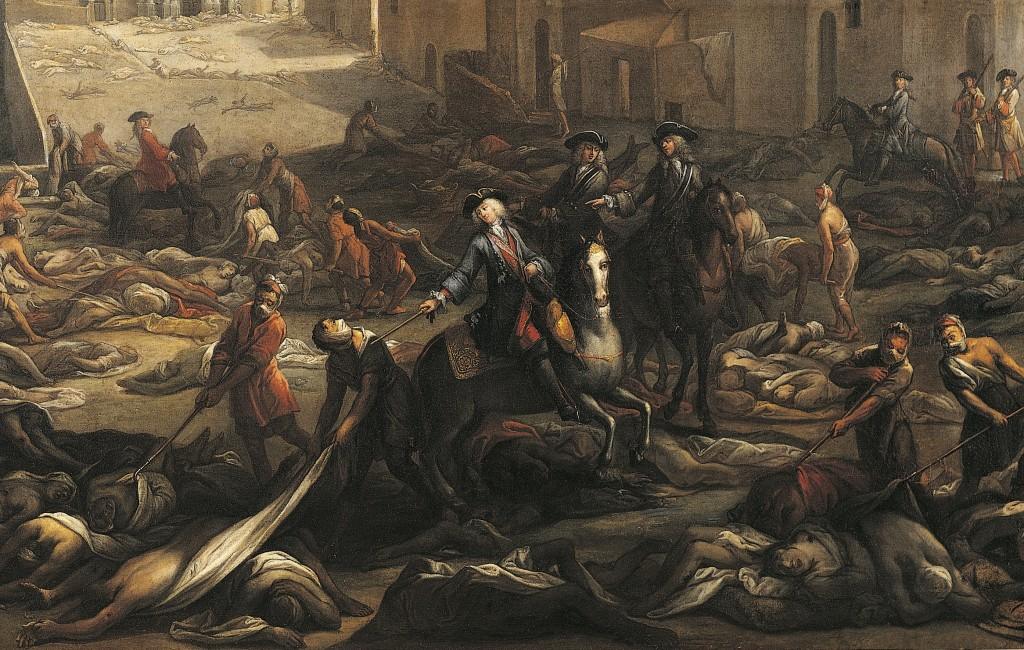
The History of the Great Plague and Its Impact on Europe
The Black Death, also known as the Pestilence, the Great Mortality, or simply the Plague, stands as one of history’s most devastating pandemics. Its impact on 14th-century Europe was catastrophic, reshaping the continent’s social, economic, religious, and political landscape in profound ways. While the disease’s legacy extends far beyond the immediate aftermath of the initial outbreak, understanding its origins, spread, and consequences is crucial to grasping the historical context that shaped modern Europe.
I. The Origins of the Plague: A Journey from Central Asia
Pinpointing the precise origin of the Black Death remains a subject of ongoing scholarly debate. However, the prevailing consensus points towards Central Asia, specifically the region encompassing modern-day Mongolia and China, as the likely birthplace of the plague bacterium, Yersinia pestis. The bacterium’s reservoir likely resided within rodent populations, particularly fleas that parasitized black rats (Rattus rattus). These rats, ubiquitous throughout Eurasia’s trade networks, served as unwitting vectors for the disease.
Several factors contributed to the emergence and spread of the plague from its Central Asian origin. The densely populated areas of Central Asia, coupled with inadequate sanitation and hygiene practices, created ideal conditions for the rapid transmission of the disease amongst rodents. The bustling trade routes connecting this region to the wider world, most notably the Silk Road, facilitated the rapid movement of infected rats and their fleas across vast distances. These routes, vibrant arteries of commerce and cultural exchange, became unwitting conduits for the plague’s deadly spread. The Silk Road’s intricate network of land and sea routes ensured the disease’s relentless journey westward.
The exact timeline of the plague’s initial spread remains debated, but evidence suggests that outbreaks occurred in several regions before its arrival in Europe. Epidemiological studies indicate a likely westward progression, impacting various populations before reaching the Mediterranean basin. The impact of these pre-European outbreaks on human populations, while less extensively documented, undoubtedly played a crucial role in preparing the ground for the plague’s later devastation in Europe.
II. The Plague’s Arrival in Europe: Messina and the Spread of Death
The year 1347 marks a turning point in European history. A Genoese trading fleet, returning from the Black Sea, docked at the Sicilian port of Messina. On board, the rats carried a deadly cargo – Yersinia pestis. The ensuing outbreak was swift and brutal. The disease rapidly overwhelmed the city’s defenses, claiming thousands of lives within a short span. This marked the beginning of the Black Death’s catastrophic rampage across Europe.
From Messina, the plague spread like wildfire across the Mediterranean, along established trade routes, and through human migration patterns. The lack of understanding concerning the disease’s transmission mechanism exacerbated its spread. The prevailing medical theories of the time, often attributed to imbalances of humors or miasmatic air, offered no effective means of prevention or treatment. The absence of effective quarantine measures and widespread ignorance regarding hygiene further fueled the plague’s rapid dissemination.
The plague’s rapid spread wasn’t solely attributed to the movement of people and goods. The prevailing social and environmental conditions within Europe provided fertile ground for the disease’s expansion. Overcrowded urban centers, characterized by poor sanitation and inadequate waste disposal systems, fostered an environment conducive to the proliferation of rats and fleas. These conditions, compounded by widespread malnutrition and weakened immune systems among the population, significantly increased vulnerability to the disease.
III. The Black Death’s Impact on Europe: A Societal and Economic Earthquake
The Black Death’s impact was nothing short of catastrophic. Death rates varied across different regions, but estimates suggest that between 30% and 60% of Europe’s population perished within a few short years. Entire villages and towns were decimated, leaving behind desolate landscapes and a profound sense of loss and despair. The plague’s impact extended far beyond mere mortality; it triggered a cascade of far-reaching social and economic transformations.
Demographic Devastation: The sheer scale of mortality had a profound impact on Europe’s population structure. The loss of so many individuals led to a dramatic decline in the overall population, altering the demographic landscape for centuries to come. Families were shattered, communities were torn apart, and the social fabric of European society was irrevocably damaged. The demographic crisis triggered a cascade of economic and social upheavals.
Economic Disruption: The plague’s impact on Europe’s economy was equally devastating. The massive loss of life severely disrupted agricultural production, leading to widespread food shortages and famine. Trade and commerce ground to a halt, as fear and uncertainty gripped the continent. The shortage of labor, coupled with the decline in agricultural production, led to a surge in food prices and widespread economic hardship.
Social Upheaval: The Black Death’s impact extended beyond the immediate loss of life. The massive loss of life caused a significant shift in social relations and power structures. The severe labor shortage that followed led to an increase in wages and a weakening of the feudal system. Serfs, once bound to the land, found themselves in a position to demand better conditions, creating tension and conflict between lords and serfs.
Religious and Intellectual Responses: The plague prompted profound responses from religious institutions and intellectual circles. The widespread death and suffering were attributed to divine punishment or supernatural forces. This led to heightened religious fervor and an increase in flagellant movements, religious processions where people publicly whipped themselves in penance. Alongside the religious fervor, the plague sparked intellectual inquiries into the causes of the disease. While these inquiries failed to identify the true causative agent, they did contribute to the growing awareness of the importance of hygiene and sanitation.
IV. Medical Responses: A Confrontation with the Unknown
The medical understanding of the plague during the 14th century was severely limited. The prevailing medical theories failed to grasp the true nature of the disease’s transmission. Treatments ranged from bloodletting and the application of leeches to herbal remedies and the use of various amulets and charms. These treatments, often ineffective or even harmful, served as a testament to the limited medical knowledge of the time.
Quarantine measures, though rudimentary, were implemented in some cities and regions. These measures, often poorly enforced and inconsistent in their application, aimed to restrict the movement of people and goods to contain the spread of the disease. The effectiveness of these early quarantine efforts varied widely depending on the specific location and the level of cooperation among the local authorities.
The lack of effective medical intervention, coupled with the limited understanding of the disease’s transmission, led to devastating consequences. The death toll soared, and the disease continued its relentless march across Europe. It was only with the advancement of scientific knowledge centuries later, specifically the discovery of the Yersinia pestis bacterium by Alexandre Yersin in 1894, that a true understanding of the plague’s etiology and transmission was achieved.
V. The Legacy of the Black Death: Shaping Modern Europe
The Black Death’s legacy extends far beyond the immediate aftermath of the pandemic. Its profound impact continued to shape European society, economy, and culture for centuries to come.
Economic Transformations: The plague’s economic consequences triggered major structural shifts. The labor shortage led to higher wages and increased social mobility for many, particularly in the rural areas. The feudal system, already under pressure, was further weakened as serfs gained leverage and the demand for agricultural labor shifted economic power.
Religious and Social Change: The widespread death and suffering challenged existing religious beliefs and practices. Questions were raised concerning the efficacy of the Church’s teachings, contributing to a growing sense of disillusionment and contributing to the rise of dissenting religious movements. Social attitudes towards death and mortality were also permanently altered. The constant threat of death heightened awareness of the ephemeral nature of life.
Advances in Public Health: While the 14th century lacked the scientific tools to effectively combat the plague, the experience fostered a growing awareness of the importance of public health measures. Though not fully understood at the time, the rudimentary quarantine measures and efforts towards sanitation laid a foundation for the development of more sophisticated public health strategies in later centuries.
Artistic and Literary Expressions: The Black Death found its way into art and literature, serving as a powerful symbol of mortality and societal upheaval. Numerous artistic representations depicted the grim realities of the plague, while literary works such as Boccaccio’s Decameron vividly portrayed the societal chaos and human responses to the crisis. The plague became a recurring theme in European art and literature, reflecting humanity’s continued grappling with the themes of death, suffering, and the fragility of human life.
Recurring Outbreaks: The Black Death was not a one-time event. Smaller, yet still significant, outbreaks recurred throughout Europe for several centuries, reminding populations of the persistent threat posed by the disease. These recurrent outbreaks continued to shape public health policies and influenced the development of quarantine measures and disease control strategies.
The Black Death remains a poignant reminder of the devastating potential of infectious diseases and the importance of preparedness and effective public health responses. Its impact on Europe was far-reaching and enduring, shaping the course of history and leaving a lasting imprint on European society, culture, and the modern world. Its legacy serves as a cautionary tale, emphasizing the fragility of human existence and the critical need for continuous vigilance in the face of infectious disease threats.


